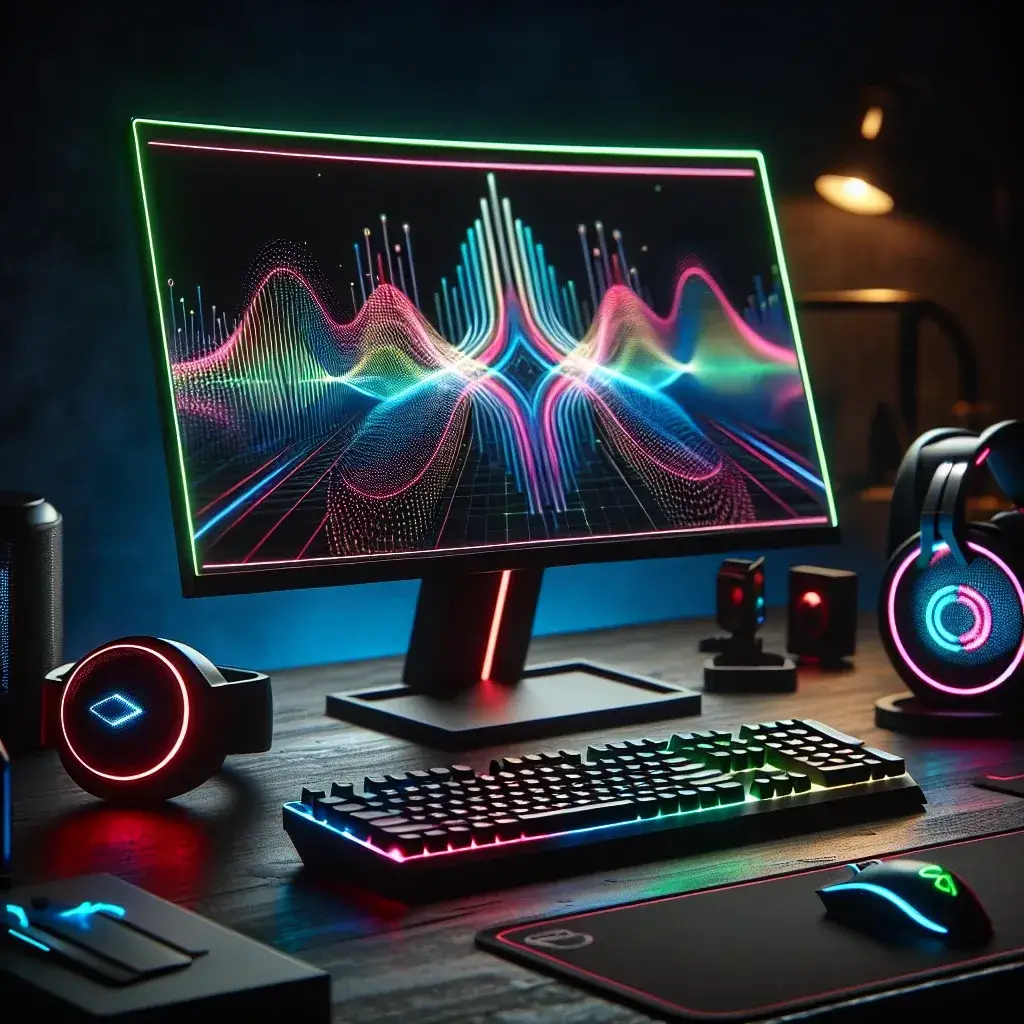Why do some gaming monitors feature audio visualizations on the screen?
Gaming monitors have evolved significantly over the years, offering various features targeted at enhancing user experience. One of the features that has caught the attention of many gamers is the inclusion of audio visualizations on the screen. These visualizations can range from simple sound bars to intricate patterns that sync with in-game audio or background music. But why do some gaming monitors feature these audio visualizations?
Understanding Audio Visualizations
Audio visualizations are graphical representations of sound. They convert audio signals into visual forms, making it possible to ‘see’ sound. These visualizations have been popular in music players for decades, but their integration into gaming monitors is relatively new.
Table 1: Types of Audio Visualizations
| Type | Description |
|---|---|
| Sound Bars | Basic visual representation of audio levels using bars |
| Waveforms | Shows the wave pattern of the audio signal |
| Spectrum Analyzers | Displays frequency components of the audio signal |
| 3D Patterns | Complex graphical representation creating immersive visuals |
Enhanced Immersion
One of the primary reasons for integrating audio visualizations into gaming monitors is to enhance immersion. Games are designed to be multi-sensory experiences, engaging not just sight and sound but also the player’s emotions and reactions. Audio visualizations add an extra layer of sensory input, making the gaming environment feel more dynamic and alive.
By synchronizing visuals with audio, players can feel more connected to the game world. For instance, a visualization that reacts to in-game explosions or background music can intensify the gaming experience, making each moment feel more impactful.
Better Audio Awareness
In competitive gaming, having a keen sense of situational awareness can make a significant difference. Audio visualizations can help players gain better insights into the game environment. For instance, if a game has directional sound cues, visualizations can show where sounds are coming from, giving players an edge over their opponents.
This feature is particularly helpful in fast-paced games where split-second decisions are crucial. By visualizing audio cues, players can react more quickly and strategically, improving their overall performance.
Customization and Aesthetics
Gamers love customizing their setups, from RGB lighting to personalized key bindings. Audio visualizations offer another layer of customization, allowing players to tailor their visuals according to their preferences. Many gaming monitors with this feature provide a range of visualization styles and settings, letting users choose what best suits their gaming environment.
Beyond functionality, audio visualizations add a visual appeal to the gaming setup. The dynamic patterns and colors can create a visually captivating experience, making the gaming area more attractive and engaging.
Technical Advancements and Integration
The inclusion of audio visualizations in gaming monitors is also a testament to technological advancements. Modern monitors are equipped with powerful processors and software capable of handling complex tasks, including real-time audio processing and visualization.
These advancements allow manufacturers to integrate features that were once limited to software applications directly into the hardware. As gaming technology continues to evolve, we can expect to see even more sophisticated and interactive visualizations in the future.
Conclusion
In summary, the inclusion of audio visualizations on gaming monitors serves multiple purposes, from enhancing immersion and audio awareness to providing customization options and showcasing technological advancements. As the gaming industry continues to grow, the demand for more interactive and engaging experiences will likely drive further innovation in monitor features, including more advanced audio visualizations.

